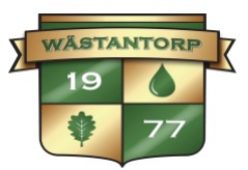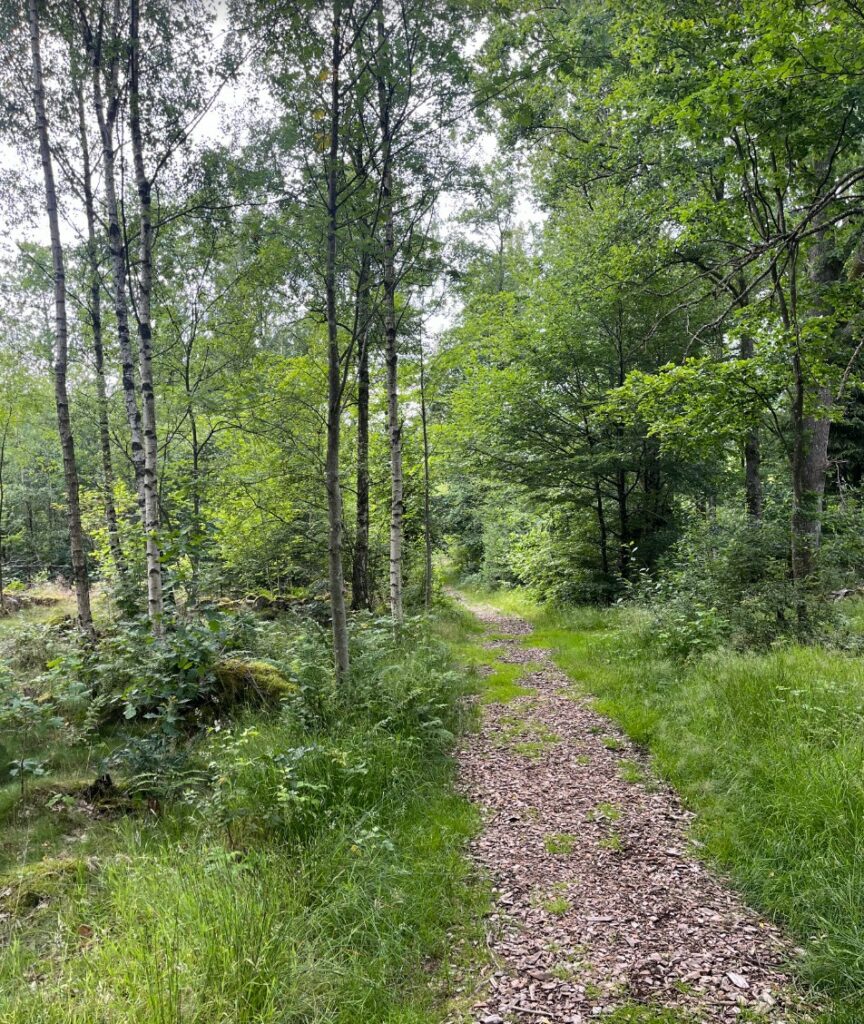Trädpolicy för Wästantorps samfällighetsförening
Uppdaterad version 1.1, 2025-09-27 English below Swedish.
Bakgrund och målsättning
Naturen och skogen har ett stort värde för många människor, för vår hälsa och våra upplevelser, men skogen har också ett eget värde. Träden i Wästantorp är värdefulla för den biologiska mångfalden, miljön och hela områdets karaktär. Det betyder att vi skall värna om träden och att de stora träden endast i undantagsfall skall fällas.
I styrelsens uppdrag ingår att förvalta marken inom samfällighetens ansvarsområden i enligt med Lantmäteriets anläggningsförättning 12-SÖR-395 och därmed de träd och buskar som växer inom området. Diskussion kring träd belägna på samfällighetens ansvarsområden förs med styrelsen, diskussion kring träd belägna på arrendetomt förs med markägaren. Ek och bok bör enligt markägaren i största möjliga mån bevaras. Olovlig nedtagning kan medföra rättslig process.
Föreningen ska, enligt § 19 Lag om förvaltning av samfälligheter (1973:1150), vid förvaltningen tillgodose medlemmarnas gemensamma bästa. Varje medlems enskilda intressen ska även beaktas i skälig omfattning. För att se till det gemensamma intresset för medlemmarna ska föreningen ha som mål att bevara och värna om grönskan inom föreningens område. Skogsområdet och de allmänna ytorna är kvalitéer som skall bevaras och skötas.
Skötsel
Enklare beskärning av träd samt röjning av sly, utförs i samband med städdagar på uppmaning av styrelsen eller utförs av husägaren själv avseende de träd vilka är självsådda på husets tomt. Skötsel av arrendetomt framgår av respektive arrendekontrakt.
Vid nedtagning av träd är huvudregeln att alla träd bör bevaras. Som träd avses sådana med en stam med omkrets över 10 cm.
Det finns undantag då träd behöver tas ner och i första hand ska beskärning ske, men i följande fall kan träd belägna på samfällighetens ansvarsområden tas bort efter beslut av styrelsen:
· Träd som utgör stor risk för skada på person eller egendom
· Träd är sjukt eller skadat
· Träd som ger mycket begränsad framkomlighet eller stor siktförsämring gällande trafik eller i syfte att gynna andra närstående träd. Det kan tex vara då trädet är delvis nedblåst, lutar och kan hota falla över hus, kraftledning, väg etc.
· Träd vars tillväxt har fått en påverkan på tomten så att nyttjandet av tomten påverkas avsevärt. Om ingen sol når ner på tomten kan det vara ett skäl men även då skall det i första hand övervägas att kapa enstaka grenar.
Följande anledningar är inte skäl för trädfällning:
· Skymd utsikt eller skugga för solpaneler
· Byggande av trädäck/uteplats, i de flesta fall kan detta anläggas runtom trädet så att träden kan bevaras.
· Allergi mot olika trädslag på tomten. Pollen har större spridning och är omöjligt att förhindra.
· Besvär med blad, kottar, ekollon etc. Detta bör man beakta då man köper stuga i området och åtgärdas genom manuell borttagning tex räfsa löv och grenar, rensa stuprännor mm.
Vid ny- eller ombyggnation kan problem uppkomma med att skapa framkomlighet för maskiner. Alla träd kan kanske inte behållas men träden ska, så långt det är möjligt, bevaras och visas hänsyn.
Föryngring och nyplantering
Beslut om nyplantering av träd på gemensamma ytor ska tas av styrelsen.
Stugägare som har träd vars grenar från annan tomt, växer över tomten kan ta ner dessa genom mindre ingrepp och då kan ändå trädet stå kvar. Om en gren går in på tomten så kan man, efter dialog med grannen såga ner den, eller om ägaren själv vill såga. Viktigt att tänka på när grenar kapas är att inte kapa grenen intill stammen så att utbuktningen vid grenens infästning i stammen, den sk grenkragen, skadas. Lägg snittet utanför grenkragen så vallas sårytan över och möjliggör trädets självläkningsprocess. Den som önskar ta ner grenen får bekosta detta.
Rutin för nedtagning av träd
1. Vid önskan om att ta ner träd med en omkrets mer än 10 cm beläget på arrendetomt ska markägaren kontaktas för skriftligt beslut om nedtagning. Arrendatorn bekostar fällning samt bortforsling av gagnvirke, ris etc. Om arrendatorn väljer att behålla virket ska överenskommelse om ersättning göras med markägaren innan nedtagning.
2. Nedtagning av träd på egen tomt – Vid ägande av egen tomt är rekommendationen att i största möjliga mån bevara områdets karaktär och bevara träden. Stugägaren bekostar fällningen.
3. Önskan om att ta ned träd utanför tomten – Alla förfrågningar om nedtagning ska ställas skriftligen till samfällighetens styrelse för kontroll och beslut på styrelsemöte. För träd utanför tomten skall även grannar som berörs kontaktas och ge skriftligt samtycke. Styrelsen behandlar önskemålet där foto på trädet och underskrifter finns med från alla berörda. Kostnaden för fällning av träd på de allmänna ytorna bekostas av de stugägare som önskar nedtagningen.
Gäller alla:
· Styrelsen kan vid behov förmedla kontakt med trädfällare/entreprenör
· Kompostmaterial, grenar etc får ej placeras utanför den egna tomten. Det åligger alla stugägare att hålla i ordning på tomten samt 10 meter utanför egen tomt, så att grenar, sly och buskar tas omhand och i tomtgräns mot väg inte växtlighet hindrar tex sophämtningsfordon enligt föreningens trivselregler.
· I de fall stug-, tomtägare planterat nöt-, frukt- eller prydnadsträd på tomten ansvarar stug-, tomtägaren för skötsel och eventuell nedtagning. Inget tillstånd behövs för nedtagning av dessa typer av träd.
· Gagnvirket tillhör markägaren, om inte annat överenskommits. Gagnvirket ska vara kapat i av virkesköparen fastställda längder och transporterat till av styrelsen och markägaren förutbestämd uppsamlingsplats. Då gagnvirke är en form av färskvara och bortforsling är volymberoende måste avverkningen ske under kontrollerad samordning.
Tree policy for Wästantorp Community Association
Updated version 1.2, 2025-09-15. English below Swedish.
Background and objectives
Nature and the forest have great value for many people, for our health and our experiences, but the forest also has its own value. The trees in Wästantorp are valuable for biodiversity, the environment and the character of the entire area. This means that we must protect the trees and that large trees should only be felled in exceptional cases.
The board’s mission includes managing the land within the community’s areas of responsibility in accordance with the Land Survey’s land use plan 12-SÖR-395 and thus the trees and shrubs that grow in the area. Discussions about trees located in the community’s areas of responsibility are held with the board, discussions about trees located on leased land are held with the landowner. According to the landowner, oak and beech should be preserved to the greatest extent possible. Illegal removal may result in legal proceedings.
The association shall, according to Section 19 of the Act on the Administration of Communities (1973:1150), in its management, provide for the common good of the members. The individual interests of each member shall also be considered to a reasonable extent. To ensure the common interest of the members, the association shall aim to preserve and protect the greenery within the association’s area. The forest area and the public areas are qualities that must be preserved and managed.
Maintenance
Simple pruning of trees and clearing of weeds is carried out in connection with cleaning days at the request of the board or is carried out by the homeowner himself regarding the trees that are self-sown on the house’s plot. Maintenance of leased plots is stated in the respective lease contract.
When removing trees, the main rule is that all trees should be preserved. Trees are those with a trunk circumference of over 10 cm.
There are exceptions when trees need to be removed and pruning should be done first, but in the following cases, trees located in the community’s areas of responsibility can be removed after a decision by the board:
· trees that pose a high risk of injury to persons or property
· trees are sick or damaged
· trees provide very limited access or significant visibility for traffic or in order to benefit other nearby trees. This can be the case, for example, when the tree is partially blown down, is leaning and may threaten to fall over a house, power line, road, etc.
· trees whose growth has had an impact on the plot so that the use of the plot is significantly affected. If no sun reaches the plot, this may be a reason, but even then, the first consideration should be to cut individual branches.
· The following reasons are not grounds for tree felling:
· Obstructed view or shade for solar panels
· Construction of a wooden deck/patio, in most cases this can be built around the tree so that the trees can be preserved.
· Allergy to different tree species on the property. Pollen has a wider spread and is impossible to prevent.
· Problems with leaves, cones, acorns, etc. This should be considered when buying a cottage in the area and addressed by manual removal, e.g. raking leaves and branches, clearing gutters, etc.
In the case of new construction or renovation, problems may arise with creating access for machinery. Not all trees can be kept, but the trees should, as far as possible, be preserved and shown consideration.
Rejuvenation and new planting
Decisions on new planting of trees on common areas should be made by the board.
Cottage owners who have trees whose branches from another plot grow over the plot can take them down with minor intervention and then the tree can still remain standing. If a branch enters the plot, it can be cut down after dialogue with the neighbour, or if the owner wants to cut it down himself. It is important to remember when cutting branches is not to cut the branch next to the trunk but to leave 10-15 cm of the branch to enable the tree’s self-healing process. Whoever wishes to take down the branch must pay for this.
Routine for taking down trees
1. If you wish to take down trees with a circumference of more than 10 cm located on a leased plot, the landowner must be contacted for a written decision on taking down. The lessee pays for felling and removal of useful timber, brush, etc. If the lessee chooses to keep the timber, an agreement on compensation must be made with the landowner before removal.
2. Taking down trees on your own plot – When owning your own plot, the recommendation is to preserve the character of the area and preserve the trees as much as possible. The cottage owner pays for the felling.
3. Request to remove trees outside the property – All requests for removal must be made in writing to the community board for review and decision at a board meeting. For trees outside the property, affected neighbours must also be contacted and give written consent. The board will process the request, which includes a photo of the tree and signatures from all parties involved. The cost of removing trees on public areas is borne by the cottage owners who wish to remove them.
Applies to everyone:
· The board can, if necessary, arrange contact with a tree feller/contractor
· Compost material, branches, etc. may not be placed outside their own plot. It is the responsibility of all cottage owners to keep the plot and 10 meters outside their own plot in order, so that branches, brushwood and bushes are taken care of and that vegetation on the plot bordering the road does not obstruct, for example, garbage collection vehicles according to the association’s amenity rules.
· In cases where the cottage or plot owner has planted nut, fruit or ornamental trees on the plot, the cottage or plot owner is responsible for their care and possible removal. No permit is required for the removal of these types of trees.
· The salvaged timber belongs to the landowner, unless otherwise agreed. The salvaged timber must be cut into lengths determined by the timber buyer and transported to a collection point predetermined by the board and the landowner. Since salvaged timber is a form of fresh produce and removal is volume-dependent, the felling must take place under controlled coordination

